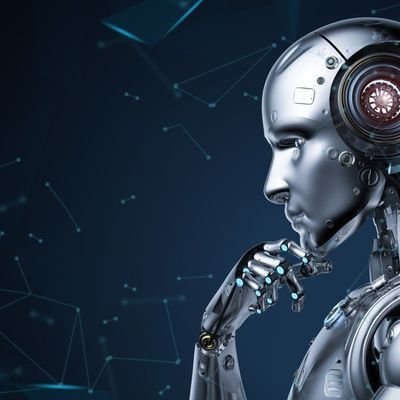
The rapid advancement of robotics and automation technologies has brought about significant changes in various industries and aspects of society. From manufacturing floors to healthcare settings, robots are increasingly being used to perform tasks that were once the domain of human workers. While the rise of robotics has led to increased efficiency, reduced costs, and the creation of new industries, it has also raised concerns about its impact on employment and society. This article explores the multifaceted effects of robotics on the workforce, the economy, and broader societal implications.
Robotics and Employment
One of the most debated topics surrounding robotics is its impact on employment. As robots become more capable and cost-effective, they are being adopted in industries traditionally reliant on human labor. This has led to fears of widespread job displacement, particularly in sectors like manufacturing, logistics, and retail. However, the impact of robotics on employment is more complex than it may seem at first glance.
Job Displacement
Robotics and automation have indeed led to job losses in certain sectors. In manufacturing, for example, robots can perform repetitive tasks such as assembly, welding, and packaging more quickly and accurately than humans. As a result, many jobs that involve manual labor have been automated, leading to a decline in demand for low-skilled workers. Similarly, in the retail sector, the rise of automated checkout systems and robotic stock management has reduced the need for cashiers and store clerks.
Job Creation
While some jobs are lost to automation, new jobs are also being created. The development, production, and maintenance of robots require a skilled workforce. Jobs in robotics engineering, software development, and data analysis are in high demand as companies look to implement and optimize robotic systems. Additionally, robots often complement human workers rather than replace them entirely. For instance, in healthcare, robots assist surgeons during complex procedures, enabling them to achieve better outcomes. This creates new opportunities for workers to develop skills in managing and working alongside robots.
Shift in Job Types
The impact of robotics on employment is also leading to a shift in the types of jobs available. There is a growing demand for workers with skills in science, technology, engineering, and mathematics (STEM), as well as those with expertise in robotics and AI. As routine and repetitive tasks become automated, the human workforce is increasingly required to focus on complex, creative, and interpersonal tasks that robots cannot easily replicate. This shift necessitates a change in education and training programs to equip workers with the skills needed for the jobs of the future.
Income Inequality
The rise of robotics has the potential to exacerbate income inequality. Workers in industries susceptible to automation may face job losses or wage stagnation, while those with skills in robotics and AI may command higher salaries. This growing disparity could lead to social and economic tensions if not addressed through policies that promote workforce retraining, education, and income redistribution.
The Economic Impact of Robotics
Robotics is having a profound effect on the global economy. By increasing productivity and reducing costs, robots are transforming industries and driving economic growth. However, these benefits are not evenly distributed, and the economic impact of robotics varies depending on the sector and region.
Increased Productivity
One of the most significant economic impacts of robotics is the increase in productivity. Robots can operate 24/7 without fatigue, performing tasks with precision and consistency. This leads to higher output levels and lower production costs, benefiting companies and consumers alike. In industries such as manufacturing, logistics, and agriculture, the use of robots has led to substantial gains in efficiency and competitiveness.
Economic Growth
The adoption of robotics is also contributing to economic growth. By reducing the cost of goods and services, robots make products more affordable and accessible to a broader range of consumers. This can lead to increased demand and higher sales, driving economic expansion. Additionally, the robotics industry itself is a growing sector, creating new business opportunities and contributing to GDP growth.
Impact on Wages
While robotics can lead to increased productivity and economic growth, its impact on wages is more nuanced. In some cases, the use of robots can lead to higher wages for workers with the skills to operate and maintain them. However, in industries where robots replace low-skilled labor, wages may stagnate or decline. The overall impact on wages depends on the balance between job displacement and the creation of new, higher-paying jobs.
Global Competition
Robotics is also influencing global competition. Countries and companies that invest in robotics and automation can gain a competitive edge by reducing production costs and improving efficiency. This has led to a race among nations to develop and deploy advanced robotic technologies. However, countries that are slow to adopt robotics may struggle to compete in the global market, leading to economic disparities.
Societal Implications of Robotics
Beyond its impact on employment and the economy, robotics is also reshaping society in various ways. As robots become more integrated into daily life, they are influencing how people live, work, and interact with one another.
Changes in Workforce Dynamics
The integration of robots into the workplace is changing the dynamics of work. In some cases, robots are taking over dangerous, monotonous, or physically demanding tasks, improving workplace safety and job satisfaction. However, the presence of robots can also lead to concerns about job security and the devaluation of human labor. Companies must manage these changes carefully to maintain a motivated and engaged workforce.
Ethical Considerations
The rise of robotics raises important ethical questions. As robots take on more roles in society, decisions must be made about the extent to which robots should replace human labor and what rights and responsibilities robots should have. For example, should robots be allowed to make life-and-death decisions in healthcare or military applications? How should society address the potential for bias in AI algorithms that control robots? These are complex issues that require careful consideration and regulation.
Impact on Human Relationships
The increasing use of robots in personal and social settings, such as companion robots for the elderly or AI-driven virtual assistants, is influencing human relationships. While robots can provide companionship and support, they may also lead to a reduction in human-to-human interaction. This could have implications for mental health and social cohesion. Society must find a balance between leveraging the benefits of robotics and preserving the importance of human relationships.
Access and Inequality
The benefits of robotics are not evenly distributed across society. Access to advanced robotics and automation technologies may be limited by factors such as income, education, and geographic location. This could lead to increased inequality if certain groups or regions are left behind in the robotic revolution. Policymakers must consider how to ensure that the advantages of robotics are shared broadly across society.
Conclusion
The impact of robotics on employment and society is complex and multifaceted. While robotics offers significant benefits in terms of productivity, economic growth, and improved quality of life, it also presents challenges that must be addressed. Job displacement, income inequality, and ethical concerns are all important issues that require careful consideration and action.
As robotics continues to advance, it is essential to develop policies and strategies that promote a balanced and inclusive approach to automation. This includes investing in education and retraining programs, ensuring access to technology, and addressing the ethical implications of robotic integration. By doing so, society can harness the full potential of robotics while minimizing its negative impacts, creating a future where humans and robots coexist and collaborate for the betterment of all.
ALSO READ: The Role of Blockchain in Supply Chain Management









